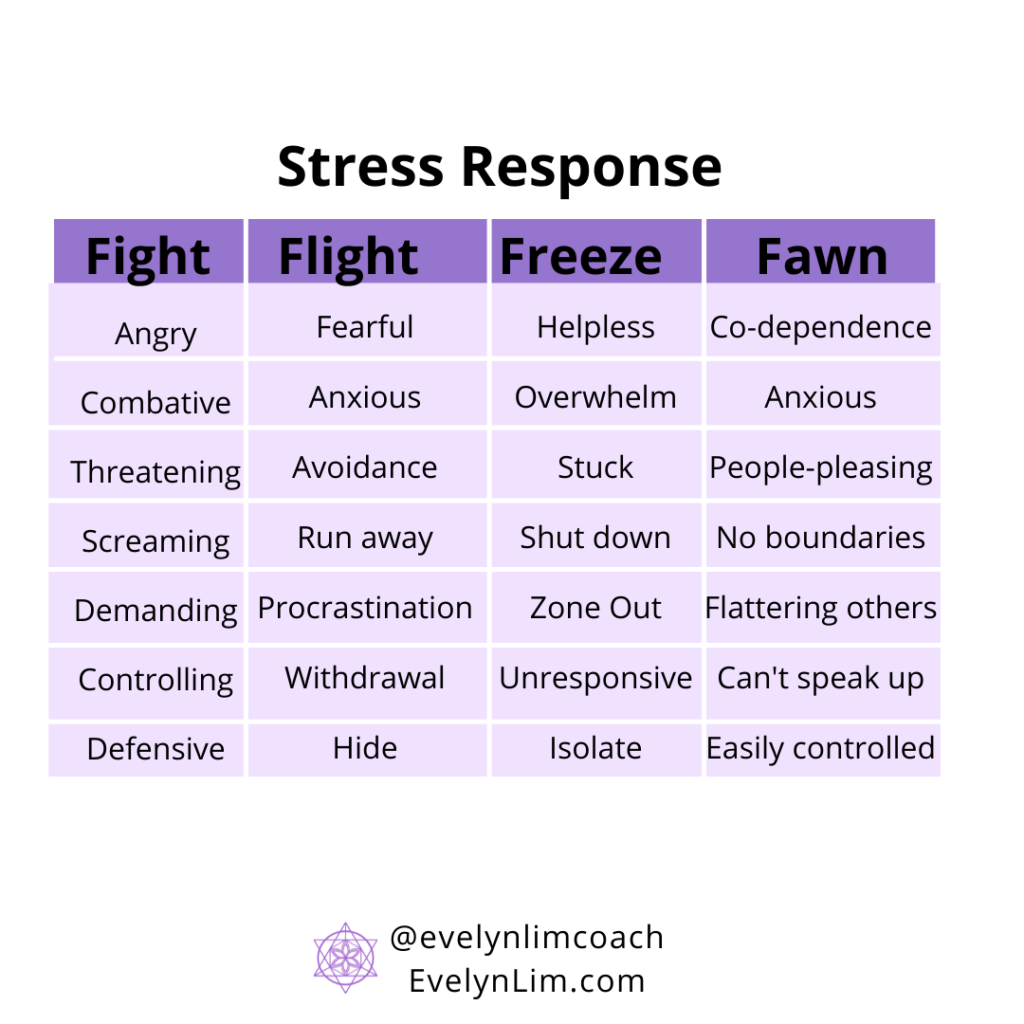What is the Fight-Flight-Freeze-Fawn Stress Response

Most of us have heard about the fight, flight and flee response to stress. But what about the fawn response? Well, let’s put them altogether so that we can understand the different responses in the face of stress.
Fight, flight or freeze is a set of stress response arising in natural body reactions to perceived threats. It’s a survival response that has been programmed since the days of our ancestors when there was real danger posed by dangerous animals. These days, the threats that we face are largely psychological. However, the body continues to respond in the same manner as if there is a tiger standing right in front of us.
In a nutshell, when faced with stress, your sympathetic nervous system is being activated. Hormones are released in your body after being stimulated by your adrenal glands; from a signal that was first transmitted to the hypothalamus by your amygdala, the emotional part of your brain. As a result, you are prompted to stay and fight, run and flee danger or stay frozen and stuck.
Acute stress response can result in the following….
- Breathlessness
- Heart rate increase
- Blood pressure rise
- Nervous tension
- Pale or flushed skin
- Dilated pupils
- Stomach upset
There are detrimental effects if your stress response remains activated over long periods of time as in chronic stress.
What is the Fawn Response?
The fawn stress response is used after an unsuccessful fight, flight, or freeze attempt.
Fawn is your body’s stress response to try to please someone to avoid conflict. It is often rooted in childhood issues where you believe that you need to be agreeable as a survival strategy. Subconsciously, you are hoping to fulfil your basic need for love and belonging due to constant emotional neglect and rejection. Unfortunately, fawn creates codependency and a loss in identity.
If stress impacts your quality of life, affects you in daily functioning or if you have a nervous system that is overreacting, do look for appropriate solutions.
Common Signs of Fight, Flight, Freeze and Fawn Stress Response

How to Alleviate the Stress Response
While our stress response is meant to protect us from extreme harm, chronic illnesses can develop with a stress response that is always activated.
One great way to alleviate the stress response is to apply EFT tapping for calming your nervous system. EFT stands for Emotional Freedom Techniques. It involves tapping on specific meridian points on your face and body using your fingertips. Tapping sends a calming signal to the emotional part of your brain, thereby releasing stress and restoring your body’s energy system.
If you’ve been using the fawn response, it is also possible to address core issues that stem from childhood. EFT tapping can be applied for healing your inner child, to change your programming and break the patterns of codependency. Review some of the testimonials here.
Apply for a discovery call if you’d like to find out more about stress reduction at deep-rooted levels and working together.
Love and abundance always,
Evelyn Lim
Accredited Advanced EFT Practitioner
Self-Love Healing Specialist


